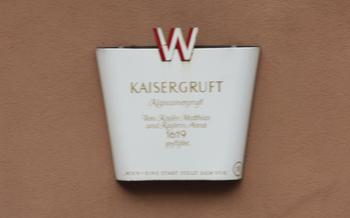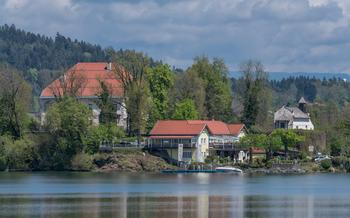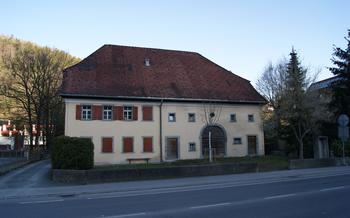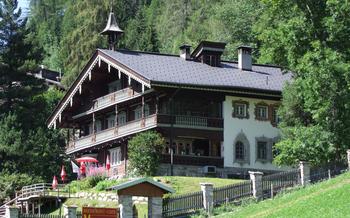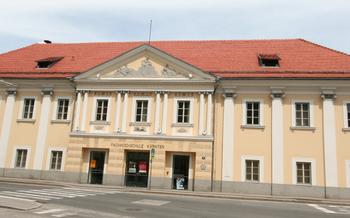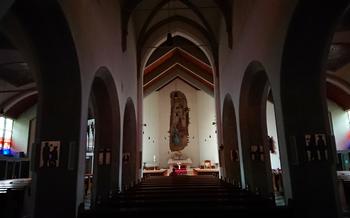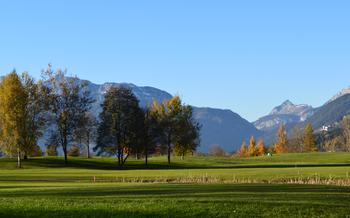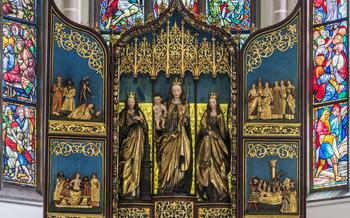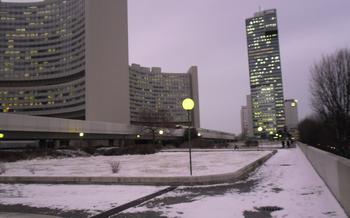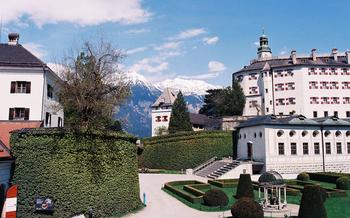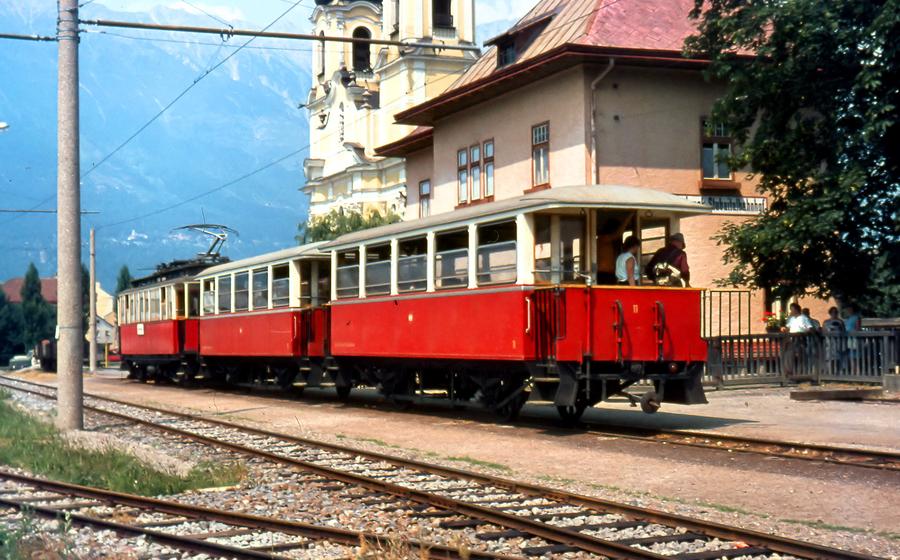
The Railway Museum
- Historical Significance
- Location and Accessibility
- Museum Building and Architecture
- Museum Collections
- Interactive Exhibits
- Educational Programs
- Temporary Exhibitions
- Guided Tours
- Souvenirs and Gifts
- Accessibility for Disabled Visitors
- Outdoor Exhibits
- Museum Hours and Admission Fees
- Events and Activities
- Insider Tip
Historical Significance
The history of railways in Austria is intertwined with the development of the country's transportation infrastructure and economic growth. Innsbruck, a major city located in the heart of the Alps, played a crucial role as a railway hub, connecting Austria with neighboring countries and serving as a gateway to the southern regions of Europe. The establishment of the Railway Museum in Innsbruck was a testament to the city's rich railway heritage and its commitment to preserving and showcasing the country's railway history.
The museum houses a remarkable collection of locomotives, coaches, and railway artifacts, dating back to the early days of steam locomotion. Among the highlights is the Imperial Wagon, a luxurious carriage that was used by Emperor Franz Joseph I during his travels. The museum also features exhibits on the construction of the Brenner Railway, a challenging engineering feat that connected Austria with Italy through the Alps, and the Tauern Railway, which linked Salzburg with Carinthia, crossing the Hohe Tauern mountain range.
Location and Accessibility
The Railway Museum is situated in the heart of Innsbruck, a vibrant city in the Austrian Alps. Its exact address is: Wilhelm-Greil-Strasse 20, 6020 Innsbruck, Austria.
Reaching the museum is a breeze, as it boasts excellent accessibility via public transportation. The Innsbruck Hauptbahnhof, the city's main railway station, is just a short walk away, providing seamless connectivity to regional and intercity trains. Tram lines 1 and 3 have stops right outside the museum, offering a convenient option for those exploring the city. For those who prefer a more scenic route, the iconic Innsbruck Sightseer hop-on hop-off bus stops right in front of the museum, allowing visitors to combine their museum visit with a leisurely tour of the city's highlights. Taxis are also readily available for those who prefer a direct and comfortable ride.
Museum Building and Architecture
The Railway Museum in Innsbruck is housed in a striking and historic building that reflects the city's rich railway heritage. Constructed in 1873, the building initially served as the main railway station of Innsbruck and played a crucial role in connecting the city to major European railway lines. Its architectural style blends elements of neoclassicism and historicism, showcasing grand arched windows, intricate cornices, and a symmetrical facade.
The interior of the museum is equally impressive, featuring a spacious main hall that once bustled with passengers and the hustle and bustle of train departures. Now transformed into an exhibition space, the hall displays a remarkable collection of locomotives, carriages, and artifacts, arranged in a manner that evokes the atmosphere of a bygone era. Visitors can marvel at the intricate details of historic locomotives, admire the elegance of vintage carriages, and gain insights into the engineering marvels that shaped the development of railways in Austria.
The Railway Museum's architecture not only serves as a testament to Innsbruck's railway history but also adds to the overall visitor experience, creating a sense of immersion and authenticity that transports visitors back in time to the golden age of rail travel.
Museum Collections
The Railway Museum in Innsbruck boasts a diverse and impressive collection of exhibits that tell the story of Austria's rich railway heritage. Visitors can marvel at a wide range of locomotives, carriages, and artifacts, each with its own unique history and significance.
Among the highlights of the collection are several historic steam locomotives, including the imposing ÖBB 57578 locomotive, built in 1937 and used on the Tauern Railway line. Visitors can also admire the sleek ÖBB 10401 electric locomotive, which was instrumental in the electrification of Austria's railway network.
The museum also showcases a variety of carriages, from opulent first-class carriages to humble third-class compartments. These carriages offer a glimpse into the different travel experiences of passengers throughout history.
In addition to locomotives and carriages, the museum displays a fascinating array of railway-related artifacts. These include signaling equipment, uniforms, timetables, and even a collection of historic railway posters. These artifacts provide a deeper understanding of the operational and cultural aspects of railway history.
Whether you're a railway enthusiast or simply curious about the history of transportation, the Railway Museum in Innsbruck is a must-visit destination. With its diverse collection of exhibits, interactive displays, and educational programs, the museum offers a captivating and informative experience for visitors of all ages.
Interactive Exhibits
The Railway Museum isn't just a static display of locomotives and carriages; it's an immersive experience that brings the history of the railways to life. Interactive and multimedia exhibits engage visitors of all ages, allowing them to experience the thrill of the rails firsthand.
One of the most popular interactive exhibits is the train simulator, which lets visitors take control of a virtual locomotive and navigate through various scenic routes. The simulator provides a realistic and challenging experience, allowing visitors to feel the weight of the train as it accelerates, brakes, and navigates curves.
Another interactive highlight is the "Build Your Own Locomotive" exhibit, where visitors can unleash their creativity and design their own unique locomotive. Using a range of components and materials, visitors can create a virtual train that reflects their imagination and engineering skills.
The Railway Museum also features several touchscreen exhibits that provide in-depth information on various aspects of railway history. Visitors can explore interactive maps, view historical photographs, and learn about the stories behind the locomotives and carriages on display.
These interactive exhibits not only entertain but also educate, making the Railway Museum a perfect destination for families with children. They offer a hands-on and engaging way to learn about the history of railways and the important role they've played in shaping Austria's transportation system.
Educational Programs
The Railway Museum in Innsbruck recognizes the importance of educating the younger generation about the history and significance of railways. To this end, the museum offers a range of educational programs and workshops specifically designed for children and families. These programs aim to make learning about railways fun and interactive, while also fostering an appreciation for the role of railways in society.
One popular program is the "Railway Adventure Day," which invites children to participate in hands-on activities and experiments related to railways. They can build their own model trains, learn about the science behind railway engineering, and even operate miniature locomotives on a specially designed track.
The museum also offers educational workshops for school groups, where students can explore different aspects of railway history and technology. These workshops are tailored to various grade levels and curriculum requirements, ensuring that students learn about railways in a relevant and engaging manner.
Additionally, the museum regularly hosts family-friendly events and workshops during weekends and school holidays. These events often feature themed activities, such as model train exhibitions, storytelling sessions, and craft workshops, that appeal to children and adults alike.
Through these educational programs and initiatives, the Railway Museum in Innsbruck plays a vital role in promoting railway knowledge and education among the younger generation, ensuring that the rich heritage of railways continues to inspire and fascinate future generations.
Temporary Exhibitions
The Railway Museum in Innsbruck does not limit itself to its permanent collection; it also hosts a dynamic array of temporary exhibitions that delve deeper into specific aspects of railway history or showcase special collections. These exhibitions are curated by experts and often feature rare artifacts, documents, and photographs that shed light on lesser-known stories and perspectives.
In the past, the museum has showcased temporary exhibitions on topics such as the history of the Orient Express, the role of railways in World War I, and the development of high-speed trains. These exhibitions have been immensely popular with visitors, drawing enthusiasts and casual visitors alike.
By presenting these temporary exhibitions, the Railway Museum ensures that its visitors are constantly engaged and informed about the latest developments and research in the field of railway history. It also allows the museum to highlight the diversity and richness of its collection, ensuring that there is always something new and exciting to discover.
Guided Tours
The Railway Museum offers guided tours that provide visitors with a deeper understanding of the exhibits and the history of railways in Austria. Led by knowledgeable museum staff or docents, these tours are an excellent way to learn more about the fascinating world of trains.
During the tours, visitors can explore the museum's collection of locomotives, carriages, and other artifacts, while gaining insights into their significance and historical context. The guides share anecdotes, technical details, and stories that bring the exhibits to life. Visitors can ask questions and engage in discussions, creating a more interactive and personalized experience.
Guided tours are available at specific times throughout the day, and reservations are recommended to ensure a spot. The museum also offers specialized tours for groups, schools, and families, which can be tailored to specific interests or learning objectives.
Whether you're a railway enthusiast, a history buff, or simply looking for a unique and educational experience, the guided tours at the Railway Museum are highly recommended. They provide an immersive journey through the world of trains and offer an unforgettable glimpse into the rich railway heritage of Austria.
Souvenirs and Gifts
Inside the Railway Museum, visitors will find a well-stocked museum shop that caters to railway enthusiasts of all ages. The shop offers a diverse range of souvenirs, gifts, and railway-themed items that are sure to delight visitors.
From classic railway memorabilia to unique and exclusive merchandise, the museum shop has something for everyone. Visitors can purchase model trains, books on railway history, vintage posters, and even clothing items adorned with railway motifs. The shop also features a selection of toys and games that are perfect for children interested in railways.
One of the highlights of the museum shop is its collection of exclusive items that are only available at the museum. These items include limited-edition prints, commemorative coins, and rare railway artifacts. These exclusive items make for excellent souvenirs for railway enthusiasts who want to take home a special memento of their visit.
Whether you're looking for a unique gift for a railway enthusiast or simply want to treat yourself to a special souvenir, the Railway Museum shop is sure to have something that catches your eye. The shop is conveniently located within the museum, making it easy for visitors to browse and shop before or after exploring the exhibits.
Accessibility for Disabled Visitors
The Railway Museum in Innsbruck is committed to ensuring that all visitors, including those with disabilities, can enjoy and access its exhibits and facilities. The museum has implemented various measures to enhance accessibility and provide a comfortable and inclusive experience for everyone.
Wheelchair users and visitors with limited mobility can easily navigate the museum's indoor and outdoor spaces. Ramps and elevators are available to access all levels of the museum, ensuring that all exhibits and displays are within reach. The museum also provides wheelchair rentals for visitors who require them.
For visually impaired visitors, the Railway Museum offers audio guides that provide detailed descriptions of the exhibits, allowing them to fully immerse themselves in the history and significance of the railway. Braille signage is also available throughout the museum, facilitating navigation and providing information about the exhibits.
The museum's staff is trained to assist visitors with disabilities and provide any necessary support. They are always willing to offer guidance, directions, or assistance to ensure that every visitor has a positive and fulfilling experience at the Railway Museum.
Outdoor Exhibits
In addition to the impressive indoor displays, the Railway Museum in Innsbruck boasts a collection of outdoor exhibits that are equally captivating. These exhibits showcase historic locomotives and carriages that have played a significant role in Austria's railway history. Visitors can marvel at the grandeur of steam locomotives, admire the sleek lines of diesel engines, and explore the interiors of passenger carriages that once carried passengers across the country.
One of the highlights of the outdoor exhibits is the ÖBB 1020 steam locomotive, a powerful machine that was once used to haul heavy freight trains over the challenging mountain passes of the Alps. Visitors can climb aboard the locomotive and imagine the thrill of driving this iconic engine through the stunning Alpine scenery. Another notable exhibit is the ÖBB 4030 electric locomotive, which was one of the first electric locomotives to operate in Austria. This locomotive represents a significant milestone in the electrification of Austria's railway network.
The outdoor exhibits at the Railway Museum provide a unique opportunity for visitors to see these historic vehicles up close and appreciate their intricate details. These exhibits serve as a reminder of the important role that railways have played in shaping Austria's transportation history and continue to play in the country's modern transportation system.
Museum Hours and Admission Fees
The Railway Museum in Innsbruck is generally open to the public from Tuesday to Sunday, with specific variations during public holidays or special events. It is advisable to consult the official website of the museum or refer to local tourism information centers for the most up-to-date information regarding opening hours.
Admission fees are structured to provide affordable access to visitors while supporting the museum's ongoing preservation and educational efforts. Adult tickets typically range from 10 to 12 euros, while reduced rates are offered for children, students, and senior citizens. Family tickets are also available, providing a discounted rate for groups of two adults and up to three children.
The Railway Museum offers a range of discounts and concessions for specific groups, such as school groups, organized tours, and members of railway associations. Visitors are encouraged to inquire about these discounts when purchasing tickets.
Events and Activities
Beyond its permanent exhibits and educational programs, the Railway Museum in Innsbruck hosts a variety of events, workshops, and activities throughout the year that further engage the community and promote railway culture. These events provide unique opportunities for visitors to experience the museum in new and exciting ways.
One of the most popular events is the annual Model Train Show, which attracts model train enthusiasts from across the region. The show features elaborate model train layouts, demonstrations, and workshops, allowing visitors to witness the intricate craftsmanship and creativity of model railroading.
Another highlight is the Railway Festival, which takes place during the summer months. The festival offers a range of family-friendly activities, including train rides, live music, food stalls, and interactive exhibits. Visitors can learn about the history of railways while enjoying a festive atmosphere.
For those interested in delving deeper into railway knowledge, the museum also organizes workshops and lectures on various railway-related topics. These events are led by experts in the field and provide participants with the opportunity to gain specialized knowledge and insights into the world of railways.
By hosting these events and activities, the Railway Museum in Innsbruck not only preserves and showcases the country's railway heritage but also fosters a sense of community and encourages a deeper appreciation for the role of railways in society.
Insider Tip
As an avid train enthusiast, I have visited the Railway Museum in Innsbruck on numerous occasions, and I always make sure to visit the museum's hidden gem - the "Lost and Found" exhibit. This unique display showcases a collection of unusual and sometimes bizarre items that have been left behind on trains over the years. From forgotten luggage containing everything from antique jewelry to exotic souvenirs to a stray pet turtle, this exhibit offers a glimpse into the lives of train passengers and the stories they carry with them. It's a fun and unexpected way to end your visit to the museum and reminds you that behind every train journey, there's a human story waiting to be discovered.
